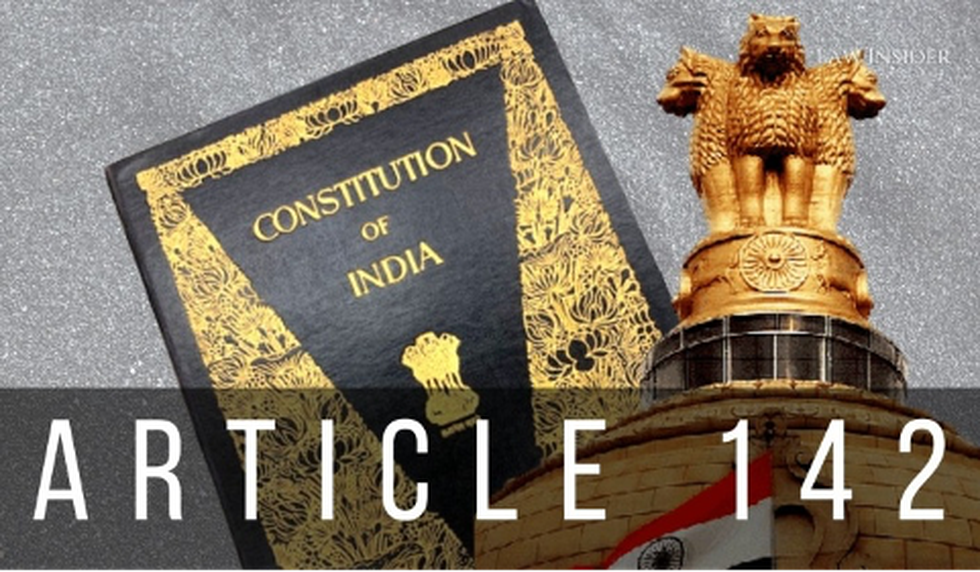
About Article 142 of the Indian Constitution:
- It deals with the Supreme Court's power to exercise its jurisdiction and pass an order for doing complete justice in any cause or matter pending before it.
- It provides the apex court with a special and extraordinary power and is meant to provide justice to litigants who have suffered traversed illegality or injustice in the course of legal proceedings.
- Article 142(1) states that “The Supreme Court in the exercise of its jurisdiction may pass such decree or make such order as is necessary for doing complete justice in any cause or matter pending before it, and any decree so passed or order so made shall be enforceable throughout the territory of India in such manner as may be prescribed by or under any law made by Parliament and, until provision in that behalf is so made, in such manner as the President may by order prescribe”.
- Significant cases where Article 142 was invoked:
- Babri Masjid Case: The article was used in the Ram Janmabhoomi-Babri Masjid land dispute case and was instrumental in the handover of the disputed land to a trust to be formed by the union government.
- Bhopal Gas Tragedy: The SC invoked its plenary powers in the Union Carbide vs Union Govt case and intervened to provide compensation to victims of the deadly Bhopal Gas Tragedy.
2. Similipal Tiger Reserve (STR)
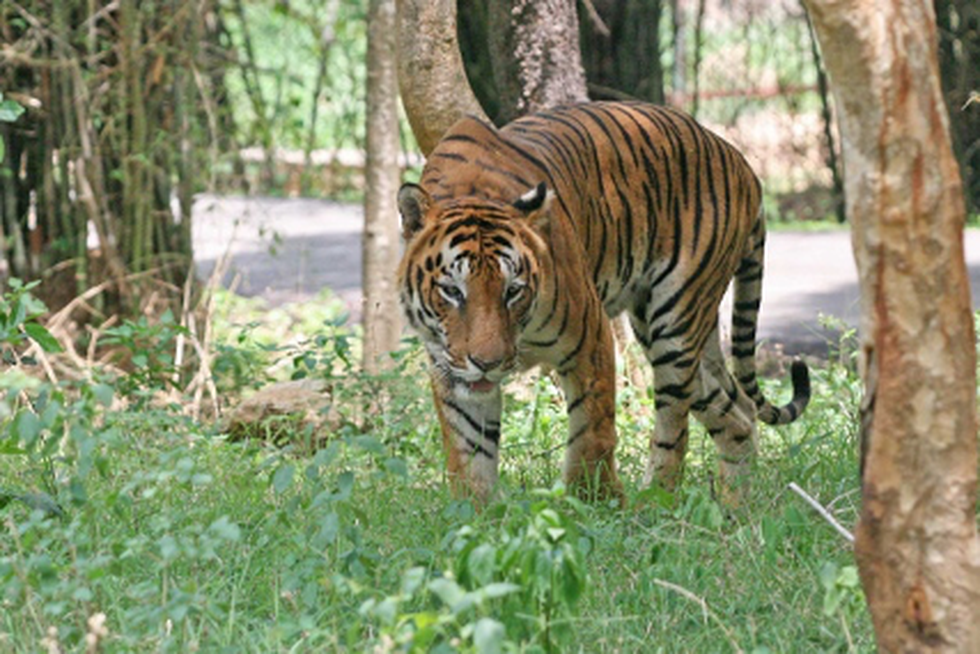
About Similipal Tiger Reserve (STR):
- Location: STR is located within the Mayurbhanj District, in the Northernmost part of Odisha.
- It is surrounded by high plateaus and hills, the highest peak being the twin peaks of Khairiburu and Meghashini (1515m above mean sea level).
- The terrain is mostly undulating and hilly, interspersed with open grasslands and wooded areas.
- Vegetation: It is a mix of different forest types and habitats, with Northern tropical moist deciduous dominating some semi-evergreen patches.
- It was declared a 'Tiger Reserve' in the year 1956and included under the national conservation programme 'Project Tiger' in 1973.
- The STR, along with a 'transitional area' of 2250 sq. km, has been included as a part of the World Network of Biosphere Reserves by UNESCO in the year 2009.
- It is the only landscape in the world that is home to melanistic tigers.
- The region around STR is home to a variety of tribes, including Kolha, Santhala, Bhumija, Bhatudi, Gondas, Khadia, Mankadia and Sahara.
- Flora:
- An astounding 1078 species of plants, including 94 species of orchids, are found here.
- Sal is the dominant tree species here
- Fauna: Leopard, Gaur, Elephant, Langur, Barking and Spotted Deer, Sloth Bear Mongoose, Flying Squirrel, Porcupine, Turtle, Monitor Lizard, Python, Sambar, Pangolin etc.
What are Melanistic animals?
- They are animals with an increased amount of the dark pigment melanin in their skin, hair and feathers, etc., giving them a dark appearance.
- Melanism is a genetic mutation that occurs in many different types of animals, including mammals, reptiles and insects.
3. Dengue Fever
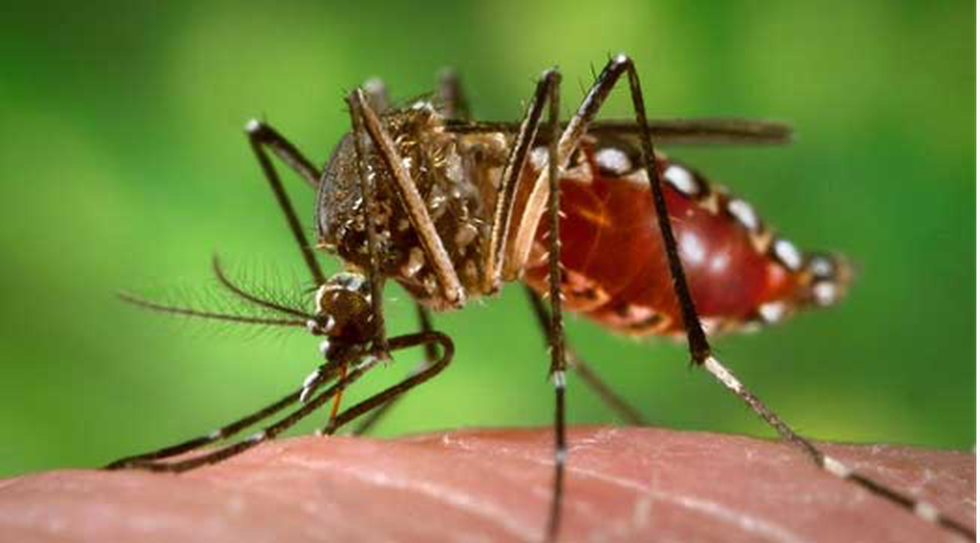
About Dengue Fever:
- It is an illness spread by the bite of mosquitos infected with one of the dengue viruses.
- It is spread by Aedes mosquitos, which also carry viruses like Zika and chikungunya.
- The virus is most commonly found in tropical and subtropical regions, including Central and South America, Africa, parts of Asia and the Pacific Islands.
- Mild dengue fever causes a high fever and flu-like symptoms.
- The severe form of dengue fever, also called dengue hemorrhagic fever, can cause serious bleeding, a sudden drop in blood pressure (shock) and death.
- It isn’t contagious from person to person except when passed from a pregnant person to their child.
- Treatment: There is no specific treatment for dengue. The focus is on treating pain symptoms.
4. International Day of Yoga 2023
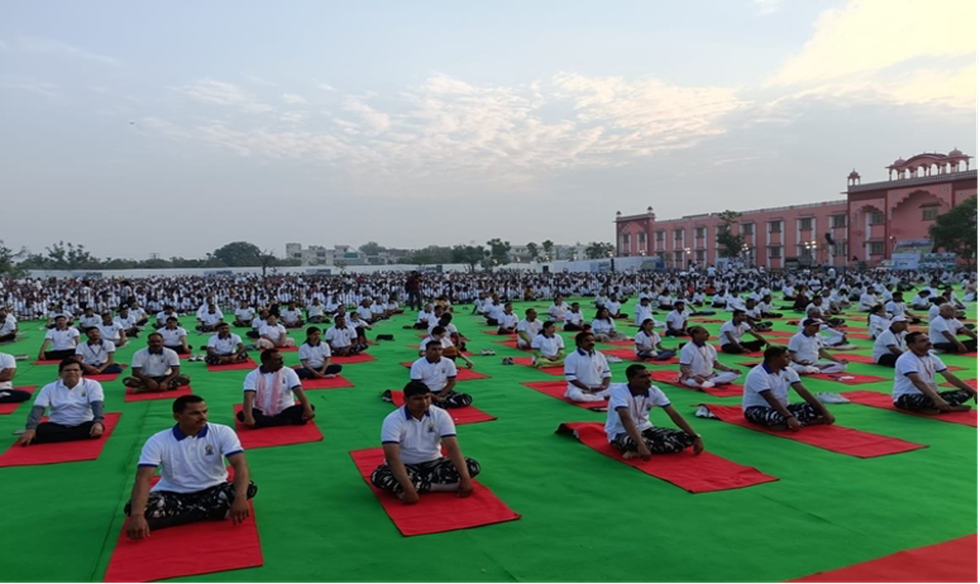
Why in News?
- The Ayush Ministry is organising the event with active support and cooperation of the state government of Rajasthan, local authorities and various institutions with an objective to boost Medical Value Travel through Yoga.
- This year, the Ministry of Ayush is also exploring the possibility of organising Common Yoga Protocol (CYP) demonstrations at important ports across globe covering all oceans and at all functional Health and Wellness Centres (HWCs) spread across the country and Ayush Gram in each state.
About Yoga:
- Yoga is the basic foundation of Indian culture which is the biggest medium of self-development.
- More than 50 centuries ago, yoga's journey as an ancient Indian science of healing and exercise started somewhere in the Indus-Sarasvati civilisation in northern India.
- The word "yoga" means "to yoke or join". It means the "union", the ultimate union between our consciousness and the higher consciousness, which some call God or divine.
- The word also refers to the union of body, mind and spirit, which we can achieve through various practices and postures.
Benefits:
- Yoga exercises such as ‘Bhastrika’, ‘Kapalbhati’, ‘Anulom Vilom’ and ‘Bhramari’, among others can make both the body and mind healthy.
- Decreases the levels of cortisol, or the stress hormone in our body.
- Helps with insomnia, and improves digestion, both of which are impacted by stress.
- Eases depression, anxiety, and mood swings by restoring dopamine and serotonin in the brain.
- Specific yogic breathing techniques like Ujjayi breath and Brahmari breath help tone the vagus nerve.
5. Padma Awards-2024

About Padma Awards:
- The Padma Awards namely, Padma Vibhushan, Padma Bhushan and Padma Shri, are amongst the highest civilian awards of the country.
- These Awards were instituted in 1954 and they are announced every year on the occasion of Republic Day.
- The award seeks to recognize ‘work of distinction’ and is given for distinguished and exceptional achievements/service in all fields/disciplines, such as- Art, Literature and Education, Sports, Medicine, Social Work etc.
- Eligibility for the nomination-
- All persons without distinction of race, occupation, position, or sex are eligible for these Awards.
- Government servants including those working with PSUs, except Doctors and Scientists, are not eligible for Padma Awards.
- Awardees receive a Sanad (Certificate) and Medallion, a small size replica (miniature) of the main medal is separately handed over to the recipient but no monetary grant is attached to these Awards.
- Who decides the winner?
- All nominations received for Padma Awards are placed before the Padma Awards Committee, which is constituted by the Prime Minister every year.
- The Padma Awards Committee is headed by the Cabinet Secretary and includes Home Secretary, Secretary to the President and four to six eminent persons as members.
- The Prime Minister and the President of India finally review and approve the recommendations.
- Result announcement
- The result will be announced on the occasion of Republic Day to recognize the ‘work of distinction’ of the people for their distinguished and exceptional achievements/service in all fields/disciplines.
6. Auroras
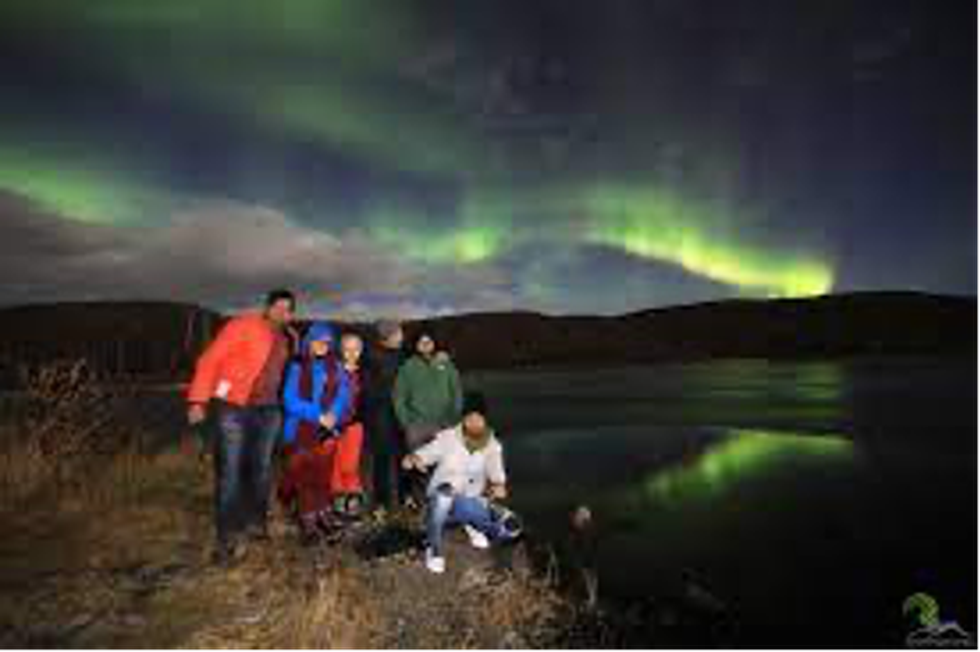
Why in News?
- The auroras are normally seen at higher altitudes in parts of Alaska, Norway, and other countries.
- This was the first time that the aurora was captured on camera in India by the Indian Astronomical Observatory.
- The 360-degree camera atop the IAO in Ladakh Hanle captured the mysterious phenomenon, which is triggered by an interaction between the plasma particles hurled by the Sun and Earth's magnetic field.
About Auroras:
- How is it formed? The sun is ejecting charged particles from its corona, creating solar wind. When that wind slams into Earth's ionosphere, the aurora is born.
- In the Northern Hemisphere, the phenomenon is called the northern lights (aurora borealis), while in the Southern Hemisphere, it's called the southern lights (aurora australis).
- The hemispheric asymmetry of the aurora is due in part to the sun's magnetic field interfering with Earth's magnetic field.
STEVE
- Another aurora-like occurrence on Earth is STEVE (Strong Thermal Emission Velocity Enhancement).
- It is a glowing atmospheric phenomenon, but it looks slightly different from its undulating auroral counterparts.
- Like the northern and southern lights, STEVE is also visible from lower latitudes, closer to the equator, than the auroras.
7. Pulverized Coal Injection (PCI)
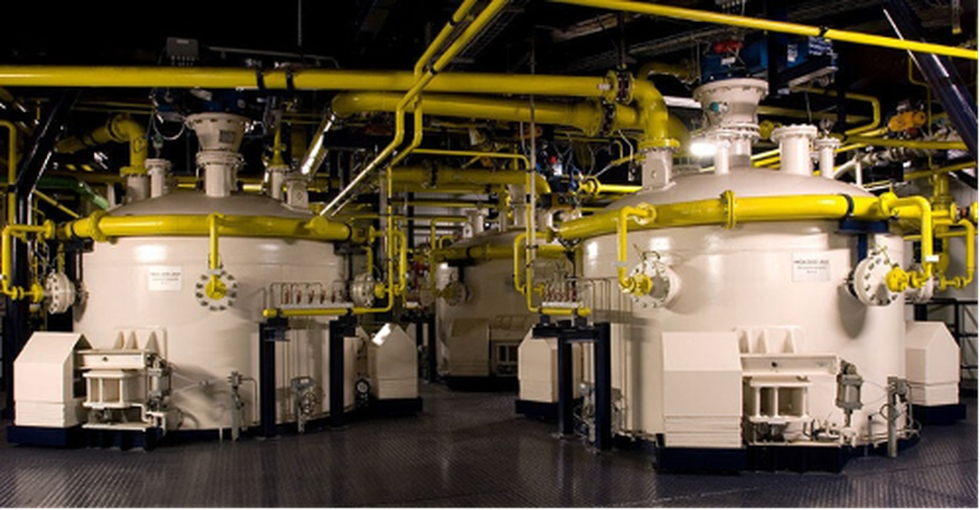
About Pulverized Coal Injection (PCI):
- PCI is a process which involves injecting large volumes of fine coal particles into the raceway of the blast furnace (BF).
- It is an essential instrument for modern blast furnace ironmaking.
- PCI provides auxiliary fuel for partial coke replacement and has proven both economically and environmentally favourable.
- It can result in substantial improvement in the BF efficiency and thus contribute to the reduction of energy consumption and environmental emissions.
- The composition and properties of the coal used for injection can influence the operation, stability and productivity of the BF and the composition of the BF gas.
- The PCI process system constitutes six numbers of sub-systems, namely,
- storage and discharge of the raw coal;
- pulverizing and drying of the raw coal;
- transportation, storage and supply of the pulverized coal to the injection system;
- uniform distribution of pulverized coal to each tuyere;
- combustion of pulverized coal;
- explosion prevention facilities;
What is a tuyere?
- A tuyere or tuyère is a tube, nozzle or pipe through which air is blown into a furnace.
- Air or oxygen is injected into a furnace under pressure from a device such as bellows or a blowing engine.
- This causes the fire to be hotter in front of the blast than it would otherwise have been, enabling metals to be smelted or made hot enough to be worked in a forge.
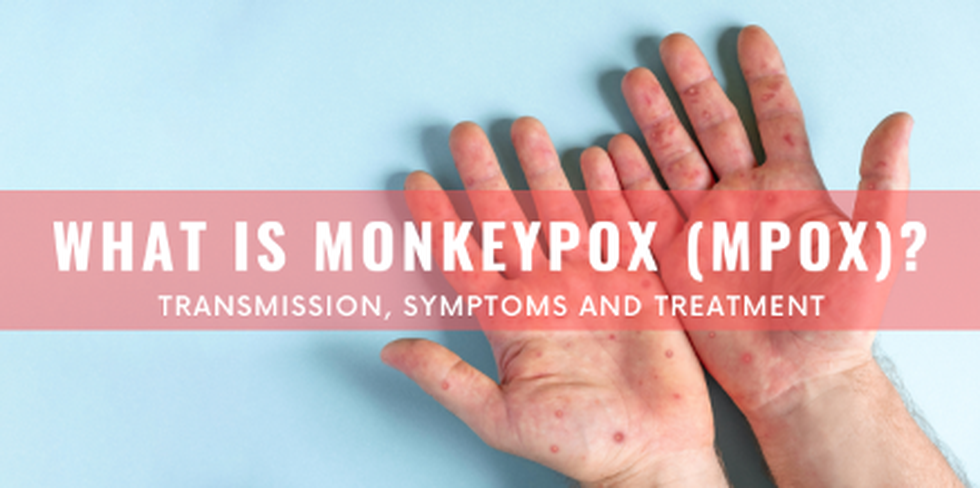
Why in the news?
- It is with the help of methyltransferase protein that the virus escapes human immunity and causes monkeypox disease.
About Mpox (monkeypox):
- It is a viral zoonotic disease caused by the monkeypox virus.
- The first human case of mpox was recorded in 1970 in the Democratic Republic of the Congo (DRC).
- There are two known types (clades) of mpox virus — one that originated in Central Africa (Clade I) and one that originated in West Africa (Clade II).
- Symptoms: Common symptoms of mpox are a skin rash or mucosal lesions, which can last 2–4 weeks accompanied by fever, headache, muscle aches, back pain, low energy, and swollen lymph nodes.
- Transmission: Human-to-human transmission of mpox occurs through direct contact with body fluids, lesions, prolonged face-to-face contact, including sexual contact, and indirect contact with contaminated clothing or bedding.
- Treatment: There are no specific treatments for monkeypox virus infection. Early and supportive care is important to help manage symptoms and avoid further problems.
What are Zoonotic diseases?
- These are infections that are spread between people and animals.
- These infections are caused by germs, such as viruses, bacteria, parasites, and fungi.
- Some can be severe and life-threatening, such as rabies, and others may be milder and get better on their own.
9. Windfall Tax

About Windfall Tax:
- What is it? It is a higher tax levied by the government on specific industries when they experience unexpected and above-average profits.
- When is it imposed?
- When the government notices a sudden increase in an industry's revenue, they impose this tax.
- However, these revenues cannot be linked to anything the company actively pursued, such as its business strategy or expansion.
- Consequently, a Windfall Tax is imposed on an industry's profits when it experiences a sharp increase in revenue due to unrelated external events.
- Rationale behind the imposition of windfall tax:
- Redistribution of unexpected gains, when high prices benefit producers at the expense of consumers;
- To fund social welfare schemes;
- As a supplementary revenue stream for the government;
- As a way for the Government to narrow the country’s widened trade deficit;
10. ASEAN-India maritime exercise (AIME-2023)

About ASEAN-India maritime exercise (AIME-2023)
- AIME-2023 is the first time India has been involved in exercises with the ASEAN though there have been exercises with ASEAN nations separately.
- Aim: Enhancing interoperability and exchange of best practices among participating navies.
- With AIME-2023, India becomes the 4th ASEAN dialogue partner, after Russia, China and the US, to hold the ASEAN+1 maritime exercise.
- The maiden exercise will be conducted off the coast of Singapore and will feature harbour and at-sea events off the coast of Singapore.
- Two major Indian Navy warships-- the INS Delhi, an indigenously built destroyer, and INS Satpura, a Shivalik-class, recently built modern stealth frigate-- are part of the exercise.
Key facts about Association of Southeast Asian Nations (ASEAN):
- It is a regional intergovernmental organizationcomprising ten Southeast Asian countries.
- It was established in 1967 with the signing of the Bangkok declaration.
- Aim: To promote intergovernmental cooperation and facilitate economic, political, security, military, educational, and socio-cultural integration among its members and other Asian states.
- Members: Indonesia, Malaysia, Philippines, Singapore, Thailand, Brunei, Laos, Myanmar, Cambodia and Vietnam.





























































































































































.png)
.png)
.png)
.png)
.png)


.png)
.png)
.png)





.png)
.png)






.png)
.png)
.png)
.png)
.png)
.png)
.png)
.png)
.png)

.png)







.png)
.png)


.png)
.png)
.png)


.png)

.png)
.png)





.jpg)

.png)
.png)


.png)

.png)
.png)
.png)

.jpg)

.jpg)


.png)

.png)
.png)
.png)
.png)
.png)
.png)
.png)
.png)
.png)
.png)




.png)

.png)





.png)
.png)
.png)
.png)
.png)
.png)
.png)
.png)
.png)
.png)
.jpg)
.jpg)

.png)
.png)
.png)
.png)
.png)
.png)
.png)
.png)
.png)
.png)
.png)
.png)
.png)
.png)
.png)
.png)
.png)
.png)
.png)
.png)
.png)
.png)



.png)
.png)

.jpg)
.jpg)


.jpg)
.jpg)
.jpg)
.jpg)
.jpg)

.jpg)





.jpg)
.jpg)
.jpg)
.jpg)
.jpg)

















.jpg)
.jpg)







.jpg)


















.jpg)
.jpg)






























































































.jpg)
.jpg)


























.jpg)

.jpg)










.jpg)








.jpg)




.jpg)










.jpg)


















.jpg)












































.jpg)














.jpg)
.jpg)
.jpg)





.jpg)

.jpg)
.jpg)





































































.jpg)


































.jpg)
.jpg)
















































.jpg)












.jpg)


.jpg)




.jpg)
.jpg)
.jpg)

.jpg)
.jpg)
.jpg)
.jpg)

.jpg)
.jpg)
.jpg)

.jpg)
.jpg)
.jpg)
.jpg)
.jpg)
.jpg)
.jpg)
.jpg)

.jpg)


.jpg)
.jpg)
.jpg)
.jpg)
.jpg)
.jpg)
.jpg)
.jpg)
.jpg)
.jpg)











.jpg)
.jpg)





.jpg)
.jpg)
.jpg)
























.jpg)
























.jpg)









.jpg)
.jpg)







.jpg)
.jpg)









































.jpg)
.jpg)
.jpg)
.jpg)
.jpg)

.jpg)
.jpg)
.jpg)
.jpg)
.jpg)


.jpg)
.jpg)
.jpg)
.jpg)
.jpg)

.jpg)
.jpg)
.jpg)
.jpg)
.jpg)
.jpg)
.jpg)
.jpg)
.jpg)
.jpg)
.png)

.png)
.png)

.png)
.png)
.png)
.png)


.jpg)
.jpg)

.jpg)
.jpg)
.jpg)

.png)
.png)
.png)
.png)
.png)
.png)
.png)

.png)
.png)
.png)
.png)
.png)
.png)
.png)
.png)
.png)
.png)





































































-min.png)



.png)




.png)








































